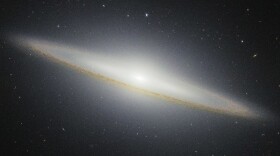This Mother’s Day weekend, the night sky offers a celestial tribute to femininity. On Sunday evening, the Moon—La Luna—shines brightly near Spica in Virgo, the zodiac’s only female figure. In the north, Cassiopeia, mother of Andromeda, forms a distinctive W-shape. Before dawn, Venus dazzles in the east, and just to her left, Andromeda adds a graceful touch to this skyward celebration of motherhood.

Play Live Radio
Next Up:
0:00
0:00
Available On Air Stations






